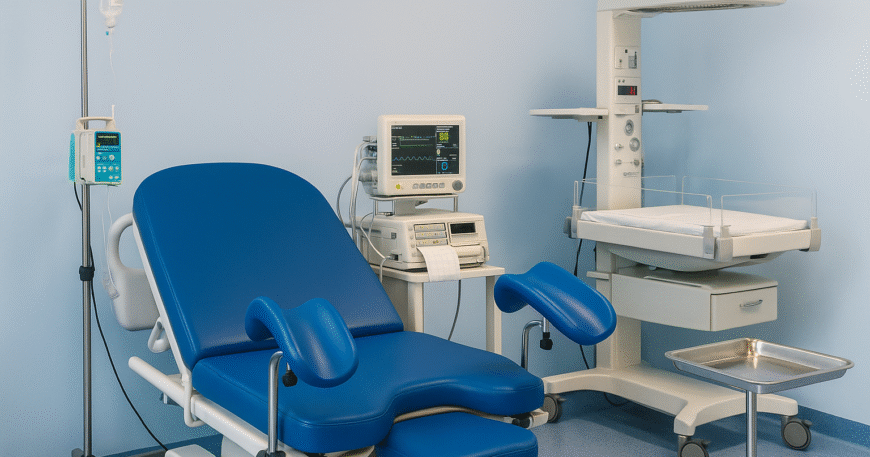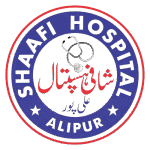
Equipment in Labour Room: Must-Have Tools That Save Lives
When it comes to childbirth, having the right tools in place can make all the difference. A well-prepared labour room in hospital settings can be the deciding factor between a routine delivery and a high-risk situation. Understanding the equipment in labour room setups helps expecting parents feel more at ease and ensures hospital staff are always ready for emergencies.
This blog explores essential labour room equipment used to manage labour, monitor the baby’s well-being, and respond to complications. Whether you’re a new parent or a medical student, this guide simplifies everything you need to know about tools that save lives during childbirth.
Why the Right Equipment Matters
Labour is unpredictable. That’s why hospitals invest in modern equipment and follow strict guidelines for labour room safety and hygiene. These guidelines ensure that both the mother and baby receive immediate support at every stage of delivery.
1. Labour and Delivery Bed
The delivery bed is more than just a place to lie down. It is designed to adjust to different positions and support active labour. These beds include stirrups, side rails, and safety belts. Some models even transform from a hospital bed to a delivery table. According to WHO, ergonomic beds reduce labour stress and help improve delivery outcomes.
2. Fetal Monitoring Devices
Monitoring the baby’s heartbeat and mother’s contractions is critical. Most hospitals use CTG machines for continuous fetal monitoring. These devices track the baby’s condition and identify warning signs.
The CTG test in pregnancy normal range is 110–160 bpm. Outside this range, medical staff can act fast.
3. Sterile Delivery Kit
Every delivery requires a sterile setup. The kit includes common labour room instruments names like scissors, cord clamps, forceps, and sponge holders. These are sterilized before every use to prevent infections.
4. Resuscitation Equipment
Newborns sometimes need help breathing after delivery. Infant resuscitation tables are equipped with oxygen, suction, and warmers. Having this equipment in labour room setups ensures immediate care.
5. Emergency Drug Tray
Drugs used in labour room deliveries play a vital role. Hospitals stock:
- Oxytocin to start or strengthen labour
- Magnesium sulfate to manage high blood pressure
- Lidocaine for local anesthesia
- Misoprostol to control bleeding
All drugs are administered under supervision and stored as per guidelines for labour room medication safety.
6. Equipment and Fluids
Lines help deliver medication and fluids quickly. Most hospitals use Ringer’s lactate or saline solutions during active labour. Glucose may be added if the mother needs energy.
7. Suction and Lighting Devices
Proper suction devices remove fluids from the baby’s airway or the surgical site. Lighting devices ensure that doctors have clear visibility. Infection control in labour room areas relies heavily on good visibility and clean tools.
8. Infant Care Corner Equipment in labour room
After birth, babies are moved to a newborn care corner. Here, doctors check weight, temperature, and perform an Apgar score test. Items in this area include infant warmers, digital scales, and newborn baby nurser tools.
9. Episiotomy and Suturing Set
If needed, a surgical cut called an episiotomy is made to assist delivery. The required set includes forceps, sutures, antiseptics, and scissors. Hospitals ensure this equipment in the labour room is ready and sterile.
10. Record-Keeping Systems
Labour rooms now feature digital monitoring and charting systems. This helps maintain accurate records of fetal heart rate, medication doses, and the mother’s condition. These systems support decision-making in critical moments.
11.Infection Control in Labour Room
Every piece of labour room equipment is cleaned and sterilized according to infection control protocols. Staff members follow hygiene routines, wear gloves, and regularly sanitize all surfaces. Who guidelines highlight that proper infection control can lower maternal infections by 70%.
12.Trusted Labour Rooms in Pakistan
Hospitals like Shaafi International prioritize safety and modern delivery care. Their labour room in hospital setups follow international standards and are equipped to manage both routine and emergency births.
FAQs
Q1: What are the most important tools in a labour room?
Delivery beds, CTG machines, sterile instruments, and infant resuscitation equipment are essential.
Q2: Why is CTG monitoring used during labour?
CTG monitoring tracks the baby’s heartbeat and the mother’s contractions to ensure the baby isn’t in distress.
Q3: What drugs are used during labour and why?
Drugs like oxytocin, magnesium sulfate, and misoprostol help manage contractions, blood pressure, and bleeding.
Q4: How do hospitals maintain infection control in labour rooms?
By using sterilized tools, disinfecting surfaces, and following hygiene protocols for all staff and equipment.
Q5: Is every labour room equipped the same way?
Not always. Reputed hospitals follow standard guidelines for labour room setup, but facilities may vary.
Sources
- World Health Organization – Safe Childbirth Checklist
- American College of Obstetricians and Gynecologists (ACOG)
- Pakistan Maternal Health Survey, 2022
Let me know if you’d like to add a CTA or visuals next.
Final Thoughts
Understanding the equipment in labour room setups helps expecting parents feel more confident and reassured. Each instrument, from a fetal monitor to a sterile scissor, plays a role in ensuring safe and smooth deliveries. As technology and medical practices evolve, hospitals must keep their labour rooms up-to-date with tools that save lives.
At trusted facilities like Shaafi Hospital Alipur, every delivery is supported by skilled professionals and reliable equipment. When you know what to expect, you can focus on what truly matters—welcoming your baby into the world.
CTR
Schedule a maternity tour at Shaafi Hospital Alipur and see our fully equipped labour rooms in person. Your safety and comfort come first.
📞 Call us: 051 2615517 / 0345 5005033
🌐 Visit:https://shaafihospital.pk/
